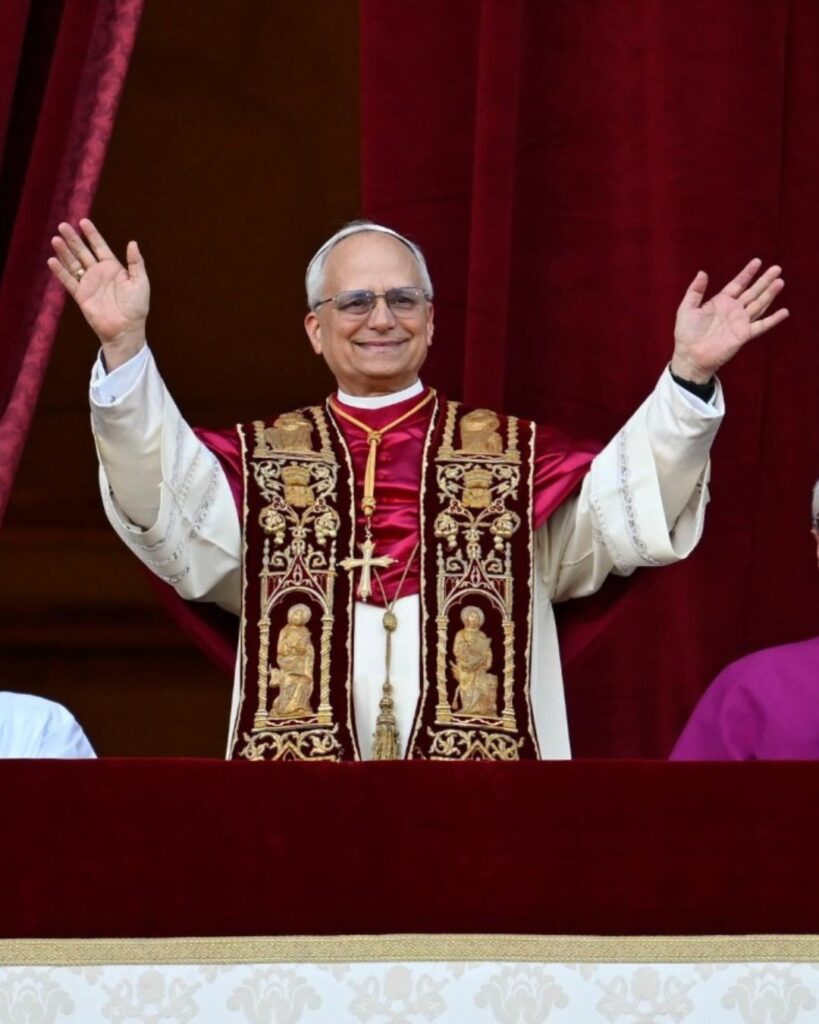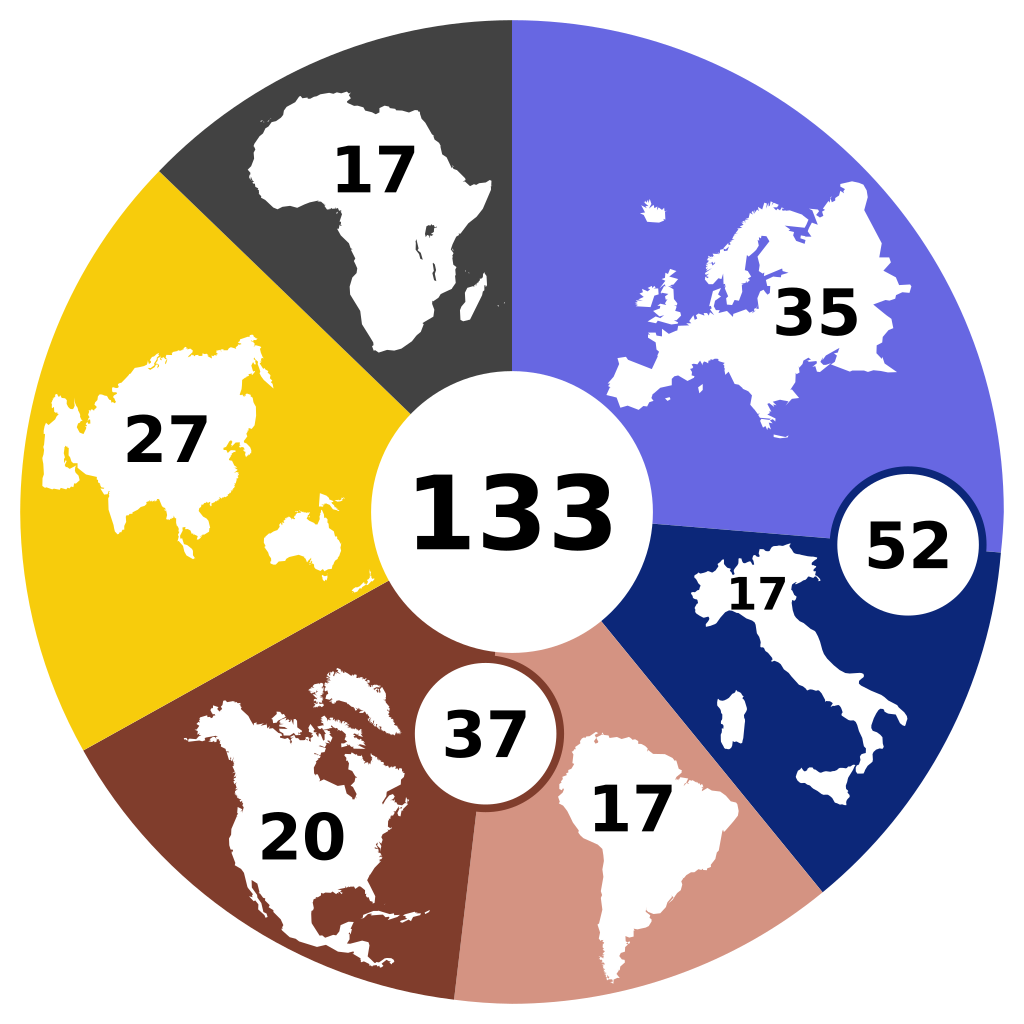On Thursday, 8 May 2025, white smoke billowed from the Sistine Chapel chimney signalling a momentous occasion in Catholic history. Cardinal Robert Francis Prevost, a Chicago-born Augustinian with deep ties to Peru, was elected the 267th Pope of the Roman Catholic Church. Taking the name Pope Leo XIV, he stands as the first North American pontiff in the Church’s 2,000-year history and only the second from the Americas following his predecessor, Pope Francis.
A groundbreaking election for the Catholic Church
The election of Cardinal Prevost represents several historic firsts for the Vatican. At 69 years old, he becomes not only the first Pope from the United States but also the first pontiff from the Augustinian order. Shortly after 5pm local time, thousands gathered in St. Peter’s Square erupted in cheers as Cardinal Protodeacon Dominique Mamberti pronounced the traditional “Habemus Papam” announcement from the central loggia of St. Peter’s Basilica.

“Peace be with all you,” were Pope Leo XIV’s first public words as he addressed the faithful from the balcony. His election came on the second day of voting, though it remains unclear whether it was on the third or fourth ballot of the 135 cardinals participating in the conclave.
The name choice of Leo XIV carries significant symbolism. Catholic commentators note that historically, the papal name Leo has been associated with strength during times of crisis. The last pontiff to bear this name was Pope Leo XIII, who led the Church from 1878 to 1903, while the first, Pope Leo the Great, served from 440-461.
From Chicago to the Vatican: The journey of Robert Francis Prevost
Early life and education
Robert Francis Prevost was born on 14 September 1955 in Chicago, Illinois, to a family with diverse European heritage. His early years reflected a deep commitment to religious life and academic excellence. After completing his initial studies at the Minor Seminary of the Augustinian Fathers, he pursued higher education at Villanova University in Pennsylvania, where he earned a degree in Mathematics while also studying Philosophy.
His religious journey formally began on 1 September 1977, when he entered the novitiate of the Order of Saint Augustine (OSA) in the province of Our Lady of Good Counsel in Saint Louis. Prevost made his first profession on 2 September 1978 and his solemn vows on 29 August 1981, cementing his commitment to the Augustinian order.
Prevost’s theological education took place at the Catholic Theological Union in Chicago. At 27, demonstrating his intellectual capabilities, he was sent to Rome to study Canon Law at the Pontifical Saint Thomas Aquinas University, commonly known as the Angelicum. While in Rome, he was ordained a priest on 19 June 1982 by Monsignor Jean Jadot, who was then Pro-President of the Pontifical Council for Non-Christians.
In 1987, Prevost completed his doctoral studies with a thesis titled “The role of the local prior in the Order of Saint Augustine,” establishing his expertise in canon law and religious governance.
Missionary work in Peru
Prevost’s connection to Latin America, particularly Peru, represents a defining chapter in his life. His first missionary experience in Peru came in 1985-1986, while he was still preparing his doctoral thesis. After completing his doctorate, he briefly served as a director of vocations and missions in his province in the United States before returning to Peru in 1988.
In Trujillo, Peru, Prevost took on multiple significant roles that shaped his understanding of the Church in the developing world. He served as director of a joint formation project for Augustinian aspirants from various vicariates, community prior (1988-1992), and formation director (1988-1998). Within the Archdiocese of Trujillo, he worked as judicial vicar from 1989 to 1998 and taught canon law, patristics, and moral theology at the “San Carlos e San Marcelo” Major Seminary.
His pastoral commitments in Peru extended to poor communities. He was entrusted with pastoral care of a church in an impoverished suburb of Trujillo, later established as the parish of Saint Rita (1988-1999), whilst also serving as parish administrator of Our Lady of Monserrat from 1992 to 1999.
Leadership in the Augustinian Order
Prevost’s leadership qualities were recognised early in his religious career. In 1999, he was elected Provincial Prior of the Augustinian Province of “Mother of Good Counsel” in Chicago. This role proved to be a stepping stone to even greater responsibility within the order. Just two and a half years later, the ordinary General Chapter of the Order of Saint Augustine elected him as Prior General, making him the worldwide leader of the Augustinian order.
His successful leadership earned him re-election in 2007 for a second term as Prior General, an uncommon distinction that highlighted his administrative abilities and the respect he commanded within the order.
Episcopal career and Vatican service
Bishop of Chiclayo and Peruvian citizenship
After completing his second term as Prior General, Prevost returned to his province in Chicago in October 2013, serving in various capacities including formation director and provincial vicar. His trajectory changed dramatically when Pope Francis appointed him Apostolic Administrator of the Diocese of Chiclayo, Peru on 3 November 2014, elevating him to the episcopal dignity as Titular Bishop of Sufar.
His episcopal ordination took place on 12 December 2014, the Feast of Our Lady of Guadalupe, in the Cathedral of Saint Mary. The ceremony was presided over by Apostolic Nuncio James Patrick Green. Prevost chose as his episcopal motto “In Illo uno unum” (In the one Christ we are one), words from Saint Augustine that reflect the unity of Christians in Christ.
On 26 September 2015, Pope Francis appointed him Bishop of Chiclayo, and in the same year, Prevost became a naturalised citizen of Peru, demonstrating his deep commitment to the country where he had served as a missionary for many years. His dual American-Peruvian citizenship would later prove significant in his papal election, helping to overcome the traditional reluctance to elect a North American pope given the United States’ global political dominance.
During his tenure in Peru, Prevost took on additional responsibilities within the Peruvian Episcopal Conference, serving as second vice-president, a member of the Economic Council, and president of the Commission for Culture and Education.
Vatican appointments under Pope Francis
Prevost’s expertise and leadership abilities caught the attention of Pope Francis, who appointed him to several significant Vatican positions. In 2019, he became a member of the Congregation for the Clergy, and in 2020, a member of the Congregation for Bishops. On 15 April 2020, he was also appointed Apostolic Administrator of the Peruvian Diocese of Callao, taking on additional responsibilities.
The pivotal moment in Prevost’s Vatican career came on 30 January 2023, when Pope Francis appointed him Prefect of the Dicastery for Bishops and President of the Pontifical Commission for Latin America, promoting him to the rank of Archbishop. This appointment placed him in one of the most influential positions in the Church, responsible for evaluating and recommending candidates for the episcopate worldwide.
In recognition of his service, Pope Francis created Prevost a Cardinal in the Consistory of 30 September 2023, assigning him the Diaconate of Saint Monica. As a cardinal, he participated in Pope Francis’s apostolic journeys and in both sessions of the 16th Ordinary General Assembly of the Synod of Bishops on synodality in 2023 and 2024.
In a final significant appointment before the conclave, on 6 February 2025, Pope Francis promoted Prevost to the Order of Bishops, granting him the title of the Suburbicarian Church of Albano.
Significance of the first North American pope
The election of Cardinal Prevost as Pope Leo XIV breaks a long-standing taboo against a North American pope. Historically, the College of Cardinals has been reluctant to elect a pontiff from the United States due to concerns about concentrating too much power in a nation that already exerts significant geopolitical influence. However, Prevost’s unique background-as both an American by birth and a Peruvian by naturalisation, with extensive missionary experience in the Global South-appears to have overcome these reservations.

As the first Augustinian pope, Leo XIV brings the spirituality and intellectual tradition of Saint Augustine to the papacy. The Augustinian order, founded in the 13th century, emphasises community life, the pursuit of truth, and service to the Church. Prevost’s episcopal motto, “In Illo uno unum” (In the one Christ we are one), reflects this Augustinian focus on unity through Christ.
Challenges and expectations for Pope Leo XIV’s pontificate
The new pontiff inherits a Church facing numerous challenges, from declining attendance in traditional Catholic strongholds to ongoing debates about reforming Church structures and addressing clerical sexual abuse. As Prefect of the Dicastery for Bishops under Pope Francis, Prevost was deeply involved in implementing Francis’s vision for a more synodal, decentralised Church that emphasises pastoral care and outreach to the margins of society.
Some Catholic commentators suggest that Prevost’s election signals a continuation of Francis’s reform agenda. It seems likely to be a continuation of Francis’s liberalisation. However, his choice of the papal name Leo, associated with strong leadership during times of crisis, may indicate his own distinctive approach to the challenges facing the Church.
Prevost’s background in canon law and his experience in Church governance-from leading the Augustinian order to serving as Prefect of the Dicastery for Bishops-provides him with valuable expertise for navigating the complex institutional structures of the Vatican. At the same time, his years as a missionary in Peru and his dual citizenship may help him bridge the divide between the Church in the Global North and the rapidly growing Catholic communities in the Global South.
Conclusion
The election of Robert Francis Prevost as Pope Leo XIV represents a historic milestone for the Catholic Church. As the first North American pope, the first Augustinian pontiff, and only the second pope from the Americas, he embodies both continuity with his immediate predecessor, Pope Francis, and a new chapter in the Church’s global mission.
His varied experience-from his intellectual formation in canon law to his missionary work in Peru, from leading a religious order to serving in the Vatican’s central administration-has prepared him for the multifaceted challenges of the papacy. As he begins his pontificate, Catholics around the world will be watching to see how Pope Leo XIV balances tradition and renewal, global leadership and local pastoral care, in guiding the Church through the complexities of the 21st century.
The choice of the name Leo, echoing popes known for their strong leadership in times of crisis, suggests that the new pontiff is prepared to face these challenges with clarity and resolve. As bells ring out across Rome and around the world announcing his election, Pope Leo XIV steps onto the world stage as a bridge-builder: between North and South, between continuity and reform, between the Church’s ancient traditions and its ever-evolving mission in the modern world.



